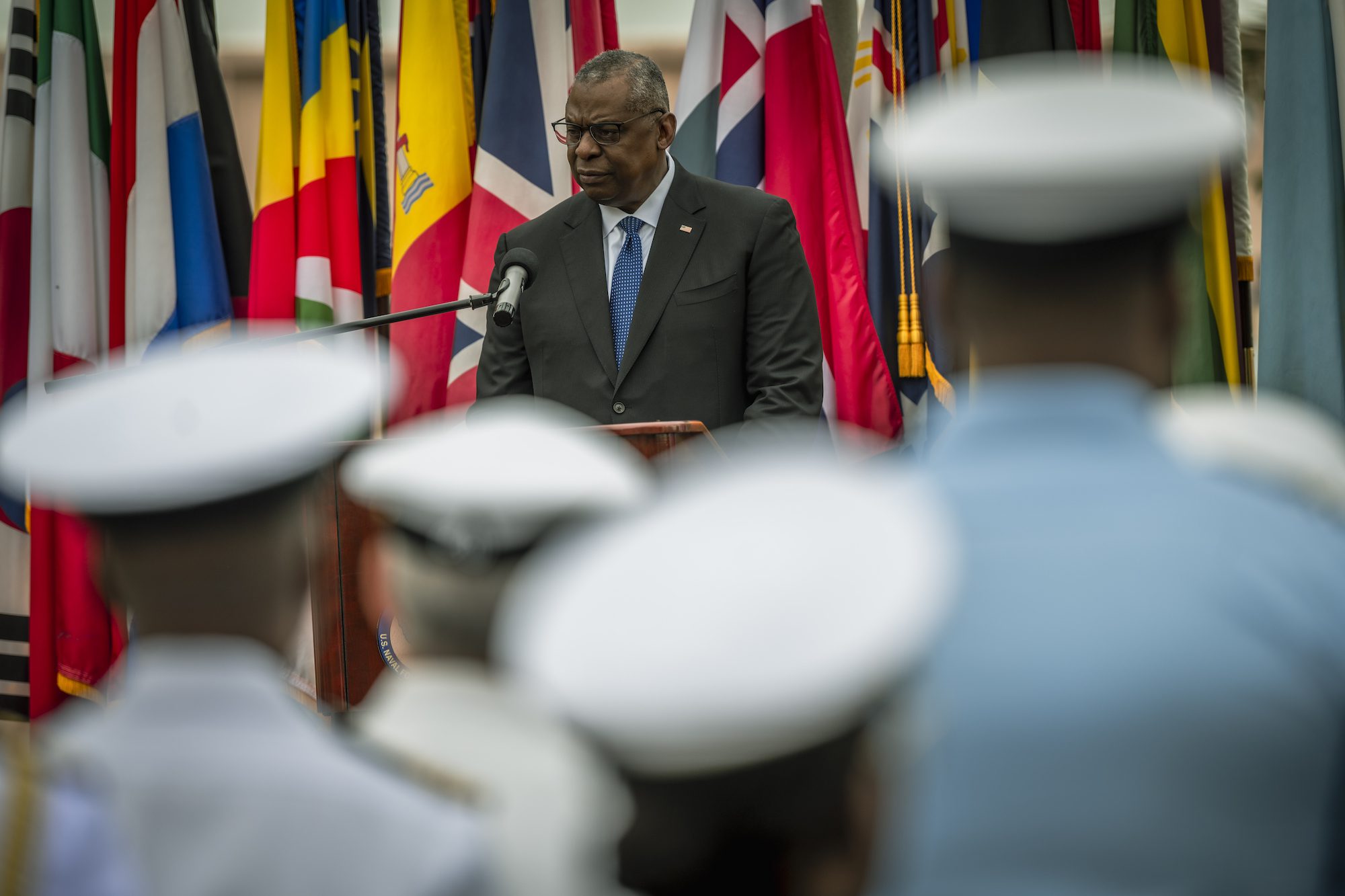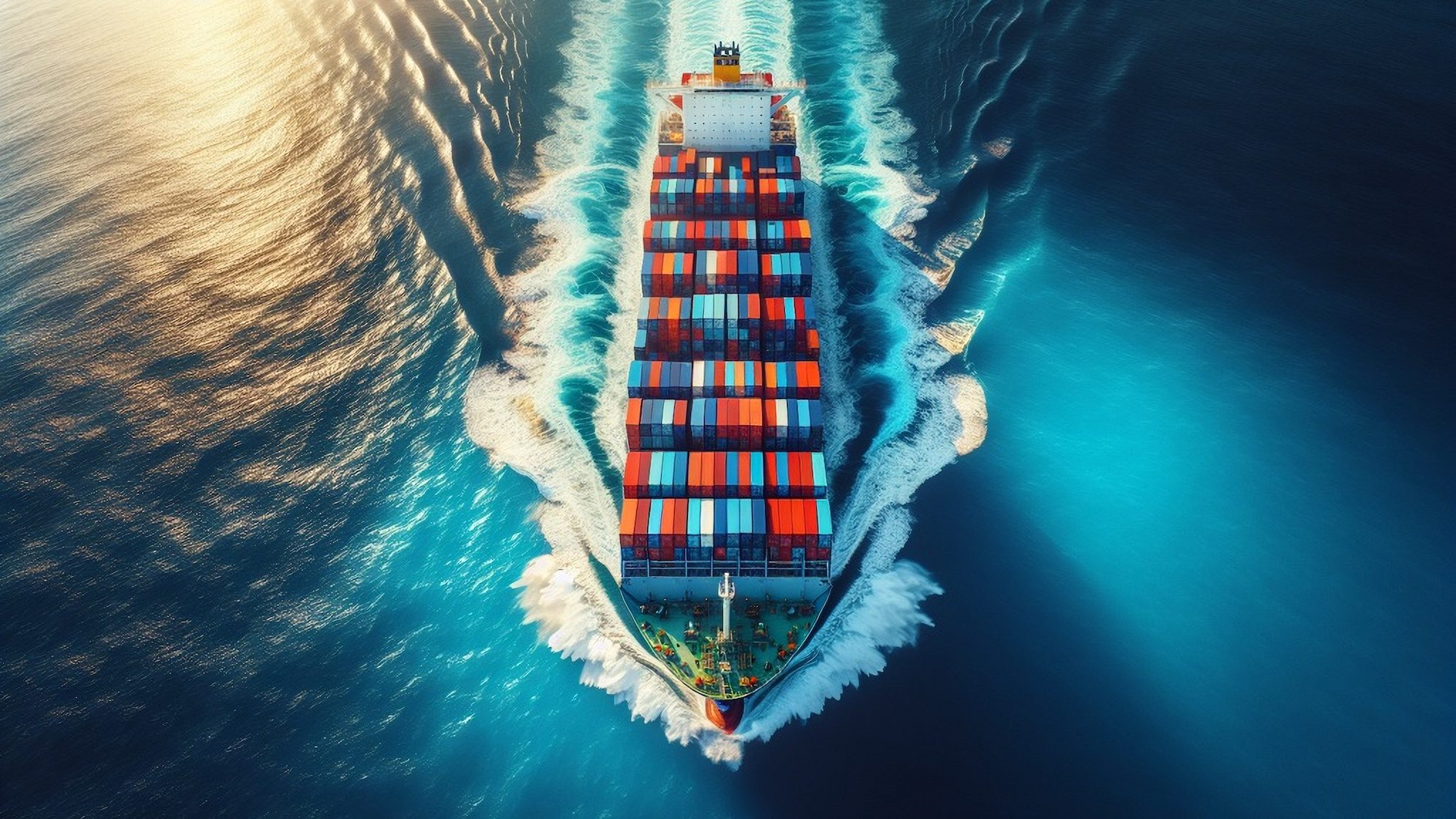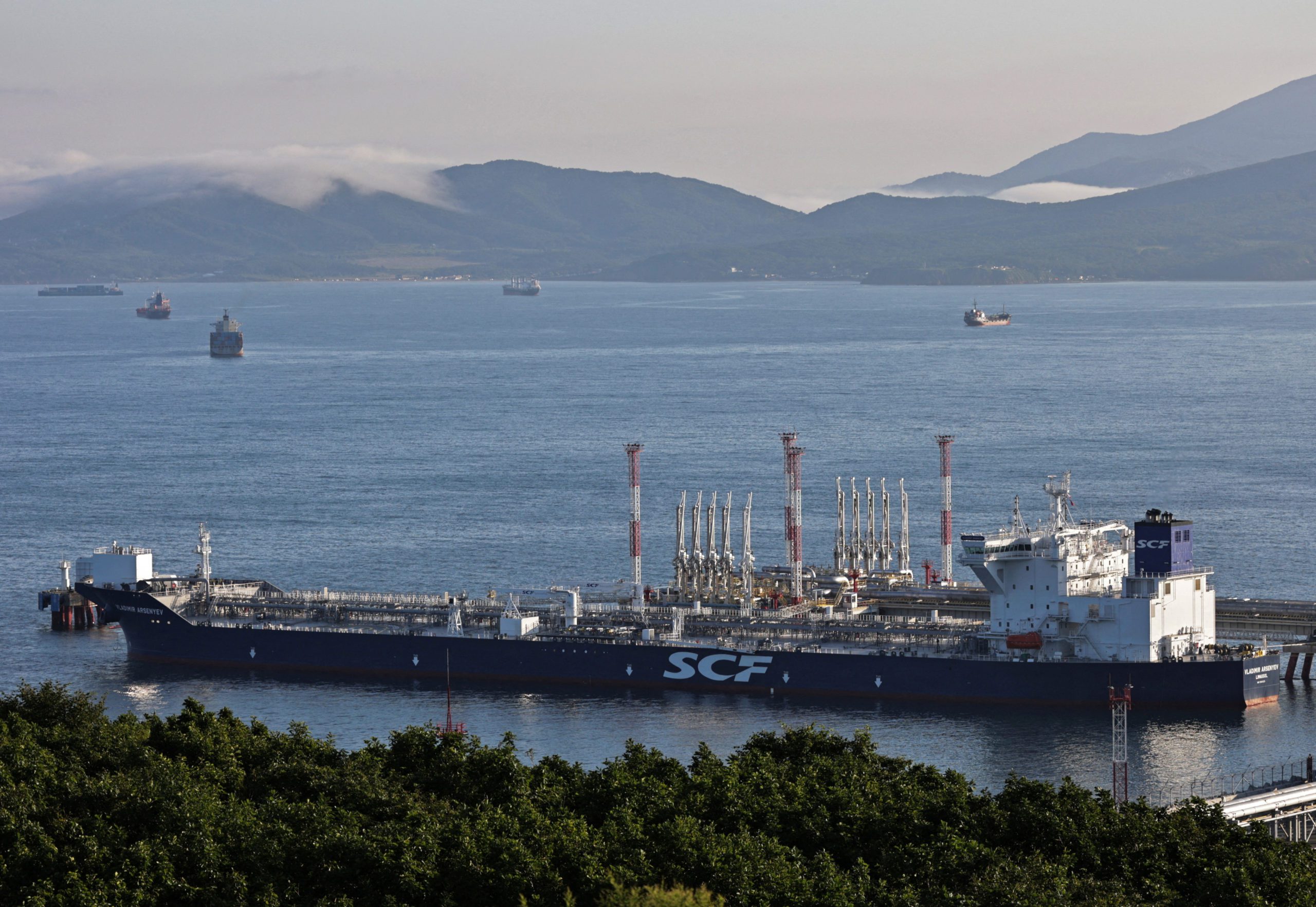By Salvatore R. Mercogliano, Ph.D. (Opinion) –
Maersk Gibraltar is not a remarkable containership for 2023. She pales at 10,100 TEUs (twenty-foot equivalent units) compared to the ultra-large container vessels (ULCVs) of nearly 24,000 TEUs. Built in 2016 at Jiangsu Yangzi Xinfu Shipbuilding, the ship is Hong Kong-flagged, owned by Greater China Intermodal Investments, and operated by Maersk Lines of Denmark. On December 15, 2023, the ship was sailing northbound in the Bab el-Mandeb and entering the Red Sea on a voyage from Salalah, Oman to Jeddah, Saudi Arabia when she was the target of attack by the Houthi in Yemen.
Following Hamas’ attack on Israel on October 7, Israel initiated a campaign of reprisal against Hamas in Gaza, which has triggered a worldwide reaction to the actions perpetrated by both sides in the conflict. The Houthi, backed by Iran, opposed the pro-Saudi Arabia-supported Yemen government leading to a bifurcated state, with the Houthi in control of the western half, boarding the Red Sea. On 14 November, the Houthi announced their intention to target an Israeli-affiliated ship and five days later staged a dramatic helicopter assault and capture of MV Galaxy Leader, capturing the ship and crew and sailing them into the territorial waters of Houthi Yemen.
HOUTHI DECLARE WAR ON SHIPPING
On December 3, the Arleigh Burke-class destroyer USS Carney (DDG-64) on patrol in the southern Red Sea, responded to the distress calls of three vessels. Back in October, after transiting southbound through the Suez Canal, Carney was in a position in the northern Red Sea to intercept drones and missiles launched by the Houthi toward Yemen. Much as it did in October, Carney responded to attacks on three ships – Bahamas-flagged bulk carrier Unity Explorer, Panama-flagged containership Number 9, and Panama-flagged bulk carrier AOM Sophie II. All three of the ships were struck and sent out distress signals. Carney assisted and shot down several drones.
The Houthi subsequently declared that all ships sailing to Israel were deemed to be legitimate targets in a further escalation. Between December 12 and 14, two further ships were attacked, along with Maersk Gibraltar, even though Maersk Gibraltar was not Israel-owned or traveling to or from Israel. It was the attack on the latter that prompted A. P. Moller, the parent company of Maersk to announce, “We are deeply concerned about the highly escalated security situation in the southern Red Sea and Gulf of Aden. The recent attacks on commercial vessels in the area are alarming and pose a significant threat to the safety and security of seafarers.” This led to Maersk diverting all its ships, including those of its U.S. affiliate – Maersk Line, Limited – to avoid the Bab el-Mandeb and the southern Red Sea. This was followed by nearly all other container lines – ZIM, an Israeli-affiliated container line, had already initiated such a detour – and several of the major tanker firms.
Container lines were more exposed to the danger posed by the Houthi than tanker or bulk firms. A Suezmax tanker could carry approximately 1 million barrels of oil. At $80 barrel, that is a total cargo value of $80 million. A 10,000 TEU ship, like Maersk Gibraltar, could carry cargo in the range of hundreds of millions of dollars. The scale of the Houthi attacks ratcheted up War Risk Insurance from 0.02% of the value of the cargo to 0.7%. On a ship worth half a billion dollars, that is a cost of $3.5 million, and the exposure to such danger from drones, cruise missiles, and ballistic missiles warranted caution on the part of the container lines.
As ships of the major container and tanker lines reversed their course and began the long 3,500 nautical mile voyage around Africa, four US-flagged ships held their position outside the Bab el-Mandeb. In the Red Sea, MV Maersk Kensington (6,200 TEUs) drifted in a position between Port Sudan and Jedda, while Maersk Sentosa (6,478 TEU) continued its transit of the Suez Canal southbound as it passed its foreign-flagged sisterships. In the Gulf of Aden, Maersk Seletar (6,478 TEU) and the Waterman Steamship roll-on/roll-off ship MV Green Bay also stood by before they could sail for the Suez.
OPERATION PROSPERITY GUARDIAN
On December 18, Secretary of Defense Lloyd Austin III announced the initiation of Operation Prosperity Guardian. He called upon, “Countries that seek to uphold the foundational principle of freedom of navigation must come together to tackle the challenge posed by this non-state actor launching ballistic missiles and uncrewed aerial vehicles (UAVs) at merchant vessels from many nations lawfully transiting international waters.” As part of the US 5th Fleet’s Combined Maritime Forces and led by Combined Task Force 153 established in 2022, Prosperity Guardian initially had a total of ten nations committed to the endeavor. As the US moved forces to the area, including swinging the aircraft carrier USS Dwight D. Eisenhower (CVN-69) and its strike group out of the Persian Gulf to the Gulf of Aden, several nations initially wavered in their support.
Some only provided personnel, while others decided to initiate operations independently while awaiting the US-led project to start. The major shipping companies reported the lack of information and action, along with no visible American effort as their US-flagged ships remained in a holding pattern, they continued their diversions.
However, this proved not to be as problematic for the container lines as they were saying publicly. They faced the twin issues of overcapacity in terms of ships and carrying capacity because of a large building spree funded by the record profits made as a result of the recent supply-chain crisis. Second, they were faced with falling freight rates meaning their revenue was endangered. Xeneta – a freight analytical firm – predicted a stormy 2024 for container companies. With low water issues in the Panama Canal limiting the number and capacity of ships transiting, and now with the Houthi causing a diversion of traffic from the Suez Canal because of a series of strikes against a handful of ships, the container lines, along with the tanker firms, were now looking at much longer, and more profitable operating levels.
To get containers partially flowing, France utilized the frigate Languedoc to escort ships of the French-owned CMA CGM Group. On the evening of 20 December, the small 1,740 TEU CMA CGM Aqaba sailed southbound from its namesake port, stopped in Jeddah, and when abeam of the northern coast of Yemen, turned off its AIS (automated identification system). It reappeared the following morning in the Gulf of Aden. It is believed that this was one of the first ships escorted through by France. With this test, the French prepared to escort two larger ships – 10,800 TEU APL Salalah and 14,360 TEU CMA CGM G. Washington – northbound on December 22. At this point, France, Italy, and Spain had initiated independent operations but announced their intent to support security in the region.
As Languedoc prepared to escort the two French-owned containerships, the US orchestrated the movement of their four US-flagged ships, with some having been drifting in the Red Sea and Gulf of Aden for over a week. The delay proved so long, that MV Liberty of American Roll-on/Roll-off carriers had reversed its course and headed back through the Suez Canal into the Mediterranean while Maersk Chicago sailed out of the Gulf of Aden for South Africa.
With USS Dwight Eisenhower stationed in the southern Gulf of Aden off the coast of Djibouti and Somalia, and with the venerable cruiser USS Philippine Sea (CG-58) patrolling between her and the coast of Yemen, Combined Maritime Forces and CTF 153 dispatched aircraft from Carrier Air Wing 3 to provide top cover and the destroyers USS Laboon (DDG-58), Gravely (DDG-107), Stetham (DDG-63), Mason (DDG-87), and Carney served as escorts on December 23. In a scene reminiscent of Tom Hanks in Greyhound, the twin US convoys were able, through an overwhelming display of force, to sail unharmed against the Houthi. However, the Houthi did make their presence known with strikes against the Norwegian-flagged tanker MT Blaamanen and the Indian-flagged tanker MT Saibaba, with the latter hit by a drone. USS Laboon reported downing four drones that were inbound to the ship, possibly the first evidence of a US warship being targeted by the Houthi.
The attacks also widened in scope. The Bulgarian-owned and Maltese-flagged bulk carrier MV Ruen was seized in the Gulf of Aden and sailed into Somali waters. This followed a similar attempt on the Liberian-flagged and Israeli-owned tanker MT Central Park but was thwarted by the crew disabled the ship, seeking shelter in a secure compartment and the rapid response of the US destroyer Mason. While some have attributed this to the restart of Somali piracy, which has been non-existent since 2017. More than likely these are Somali privateers, acting in conjunction with the Houthi to disrupt global shipping. Concurrently, Iran has attacked ships in the Arabian Sea – the Malta-flagged CMA CGM Symi and Liberian-flagged tanker Chem Pluto. The latter provoked both the Indian and Pakistani navies to establish patrols in the Arabian Sea against further Iranian attacks.
MAERSK MOVES THE NEEDLE
The passage of the three US-flagged Maersk Line, Limited ships led A. P. Moller-Maersk to announce on December 24 that, “Operation Prosperity Guardian (OPG) has now been set up and deployed to allow maritime commerce to pass through the Red Sea / Gulf of Aden and once again return to using the Suez Canal as a gateway between Asia and Europe…we are preparing to allow for vessels to resume transit through the Red Sea both eastbound and westbound. We are currently working on plans for the first vessels to make the transit and for this to happen as soon as operationally possible.” It cannot go unnoticed that Maersk made this announcement on the completion of a major effort by the US Navy to ensure the safe passage of three US-flagged subsidiary vessels.
The announcement was followed by the movement of at least a dozen Maersk Line ships in the Mediterranean and around Europe toward Port Said at the northern end of the Suez Canal, while three ships in the Indian Ocean deviated from their transit to South Africa. Except for CMA CGM and MSC moving some ships in the area of the Bab el-Mandeb, no other line reversed course as quickly as Maersk.
WHOSE PROSPERITY?
This decision highlights four potential questions regarding the restoration of normal container liner service between Asia and Europe;
- The effort exerted by the U.S. was for American-flagged ships, all of which were part of the Maritime Security Program and carrying cargo for the Department of Defense. Should Operation Prosperity Guardian, largely supported by the U.S. Navy, provide the escort service for foreign-flag ships of A.P. Moller-Maersk, based in Denmark and with many of their ships registered in that country, but Denmark’s contribution to the operation is a single staff officer?
- Will the defensive convoying (countering the Houthi attacks without striking back) be sufficient to see the resumption of normal traffic through the Red Sea and most importantly mitigate the high War Risk insurance rates caused by the Houthi?
- Currently, an entire Carrier Strike Group and the majority of an Amphibious Ready Group are in the area. But should an incident occur elsewhere, they could be withdrawn and expose any shipping that continued to sail through the region or returned. How long will, and can, the US Navy maintain this level of escort?
- Since the root of this issue is the Israel-Hamas conflict, it does not appear that a purely defensive strategy as practiced so far in Operation Prosperity Guardian will deter Houthi attacks or others that have ranged to the seizure of a ship off the coast of Somali or attacks on vessels by Iran in the Arabian Sea. Will the conflict expand to other regions threatening trade out of the Persian Gulf?
Operation Prosperity Guardian aimed to ensure that the main ocean artery between Europe and Asia, which carried 15% of the world’s trade, was safe for the major shipping lines. It was Maersk, along with Hapag-Lloyd that led the charge to abandon the route. But now, after the successful convoying of Maersk Line, Limited vessels by the US Navy, it appears that Maersk may be resuming their trade, but Hapag-Lloyd is not.
The large number of ships sailing from Europe and only a handful from Asia may indicate that Maersk sees an opportunity to take advantage of Operation Prosperity Guardian. The ships from Europe will be returning empty containers to Asia. With most of the Maersk fleet taking the longer voyage around Africa, this means that the normal return of empty containers, needed for restuffing in Asia could jeopardize cargo bound for Europe and other destinations in the first quarter of the new year.
The ships sailing from Asia and now heading to Europe on the traditional route could mark the beginning of premium service as we are seeing the ocean carriers laying surcharges on longer routes. During the supply chain crisis, express service and the ability to move to the front of the line necessitated a substantial payment.
In the weeks to come, we will see the situation between the Houthi, international shipping, and the world’s navies further develop. The goal of Operation Prosperity Guardian is to ensure the prosperity of the world by ensuring the free flow of goods and ships through the international waterways off the coast of Yemen. If the main beneficiary of the operation is one of the largest shipping corporations in the world, then there is a question of whose prosperity is Operation Prosperity Guardian truly guarding?
Salvatore R. Mercogliano is a former U.S. merchant mariner, maritime historian, and creator of the popular Youtube channel “What’s Going on With Shipping?“. The opinions expressed here are his own.

 Join The Club
Join The Club











